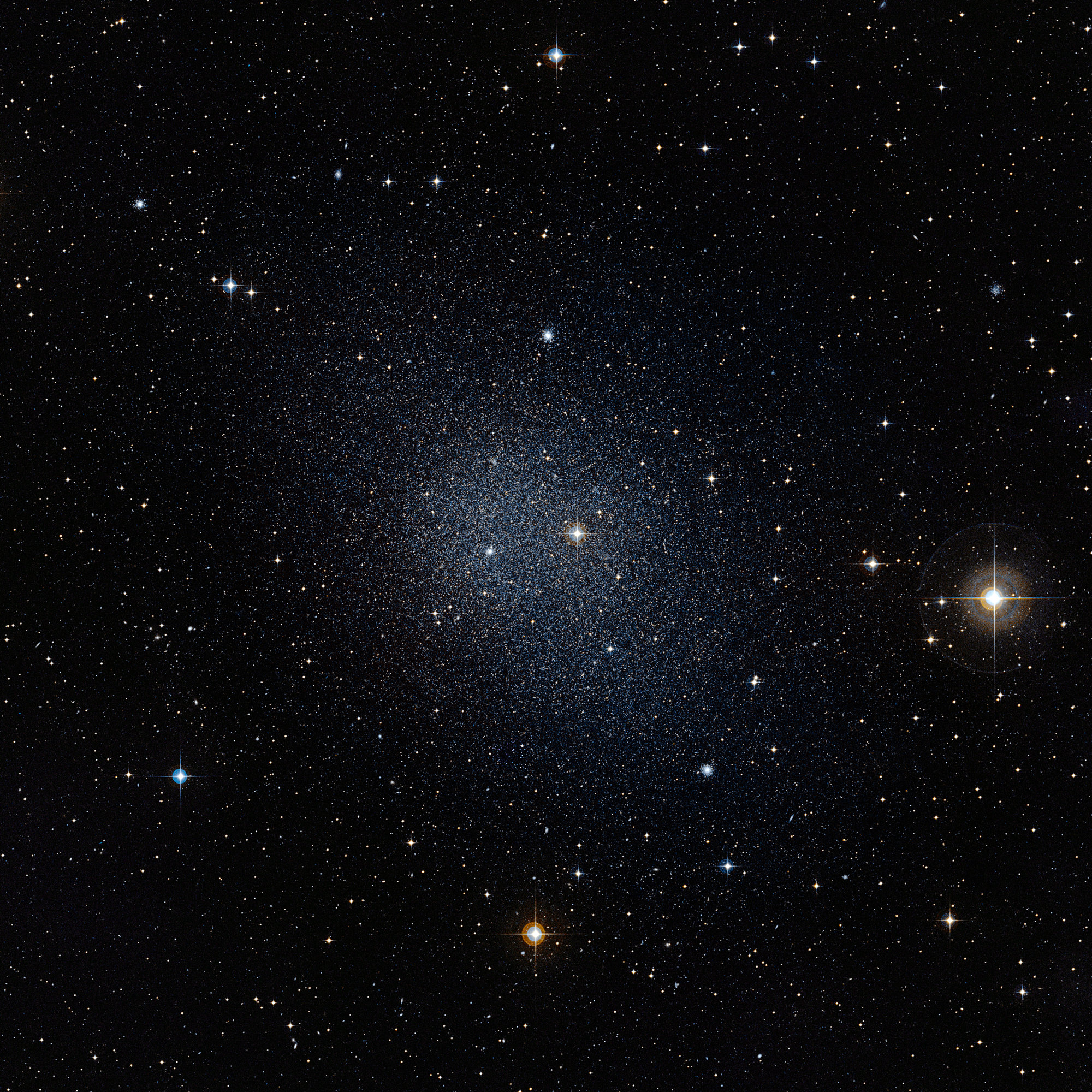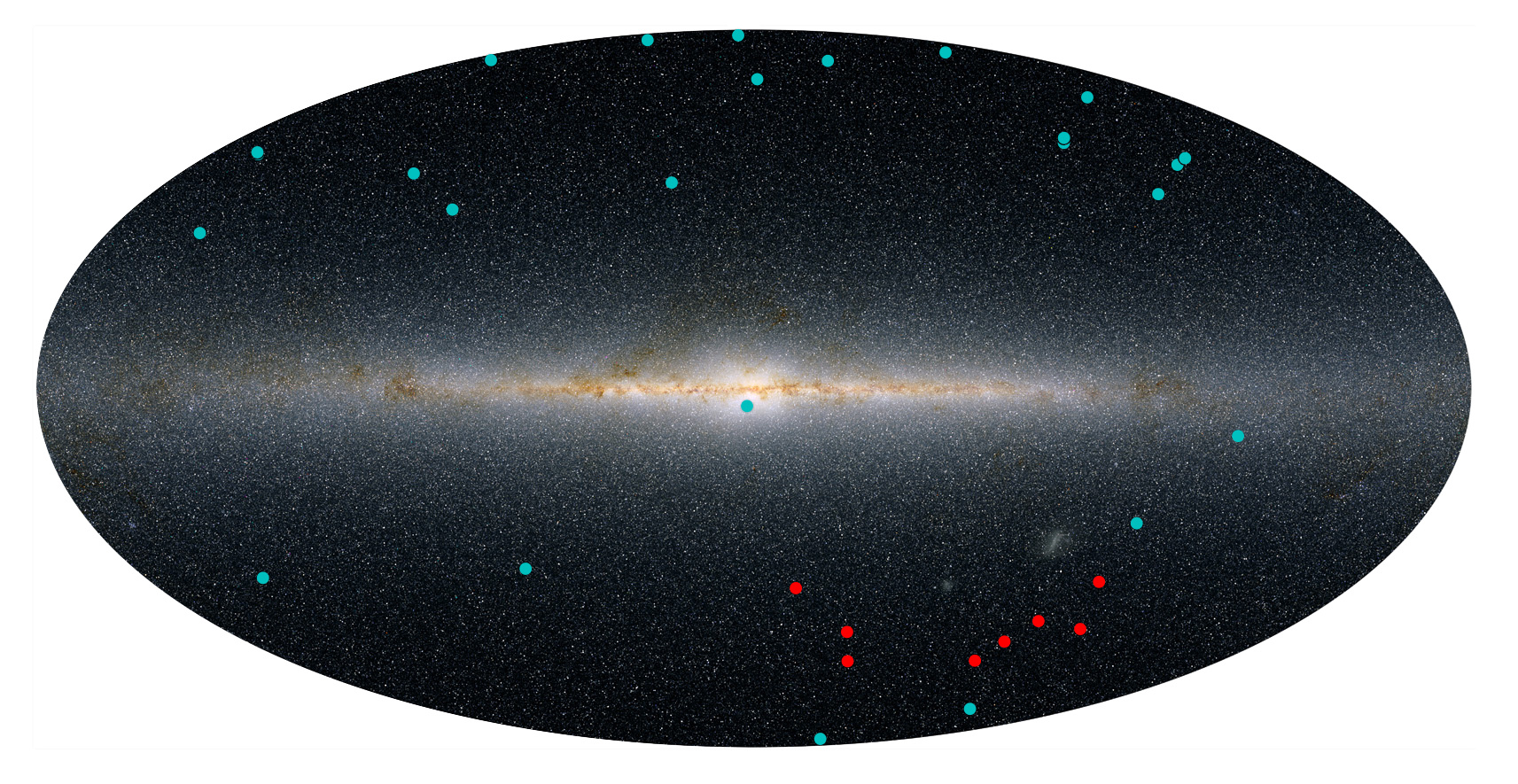
The Fornax dwarf galaxy, a satellite of the Milky Way similar to the ones recently discovered by the Dark Energy Survey. (Photo credit: ESO/Digital Sky Survey 2.)
by Benjamin Recchie
Our home galaxy, the Milky Way, isn’t alone—not only is it just one of hundreds of billions of galaxies in the observable universe, astronomers know of a couple dozen smaller galaxies orbiting, and in some cases, merging into the Milky Way. Recent results from the Dark Energy Survey (DES) increase the number of neighbor galaxies by as many as eight—and suggest that there are many more to be found.
DES is an international partnership between scientists at 25 universities and other research institutions, including the University of Chicago. The DES Collaboration uses observations from a 4-meter telescope at Cerro Tololo Inter-American Observatory in Chile to probe the dynamics of the expanding universe and the growth of cosmic structures, such as galaxies and clusters of galaxies.
Large galaxies, including the Milky Way, are surrounded by dwarf galaxies, containing relatively few stars—hundreds to thousands, compared to the Milky Way’s hundreds of billions. Discovering these faint satellite galaxies is much more than a cataloging exercise, according to Keith Bechtol, who was with Chicago's Kavli Institute for Cosmological Physics at the time the research was first unveiled but has since moved to the University of Wisconsin—Madison. Satellite galaxies trace the otherwise invisible dark matter that surrounds the Milky Way. In addition, astrophysicists use the Milky Way's companions to study how galaxies grow. Dwarf galaxies formed first, and large galaxies like the Milky Way have been assembled over billions of years from the merging of many smaller galaxies.
The DES scientists searched their data for satellite galaxies using two methods. First, they employed a simple method: finding places on the sky where there seemed to be an unusually large number of stars. The second method, termed the maximum-likelihood method, was more complex: the researchers used multiple characteristics of stars, including brightness, color, and location, to calculate the likelihood that each star was associated with either the Milky Way or a satellite galaxy.
The DES Collaboration used the Midway compute cluster at the University of Chicago’s Research Computing Center to develop the algorithm for the maximum-likelihood search, explains Bechtol. “This involved many simulations to validate the algorithm,” he says. “We wanted to check that the input properties of simulated satellite galaxies could be accurately recovered and also determine the faintest galaxies that could be detected in the DES data.” They ran the resulting code on a compute cluster at the Stanford Linear Accelerator Laboratory, while simultaneously using Midway to run the simple search method. They also used Midway to calibrate the colors of all the stars involved.

In this side view of the Milky Way, the blue circles identify the locations of satellite galaxies of the Milky Way that were known prior to 2015, while the red circles show new satellite galaxy candidates that were announced by the DES team this spring. Image courtesy Keith Bechtol.
Using both methods, the researchers compiled a list of eight candidate galaxies. The brightness, compactness, and distance to each candidate matches those of known satellite galaxies; however, further confirmation will be needed to verify that each is a true galaxy and not a globular cluster (a similar cluster of stars that originates within a larger galaxy).
Before the DES study was released, the Milky Way had just a couple dozen known satellite galaxies. “In a three-week period, the number of known Milky Way satellites grew by nearly 50%,” Bechtol says with excitement. Now several independent research groups are searching various datasets from the Chilean telescope. The total number of neighboring dwarf galaxies could be over a hundred—plenty more for DES and future surveys to find.